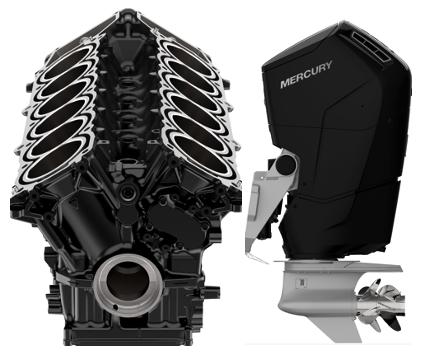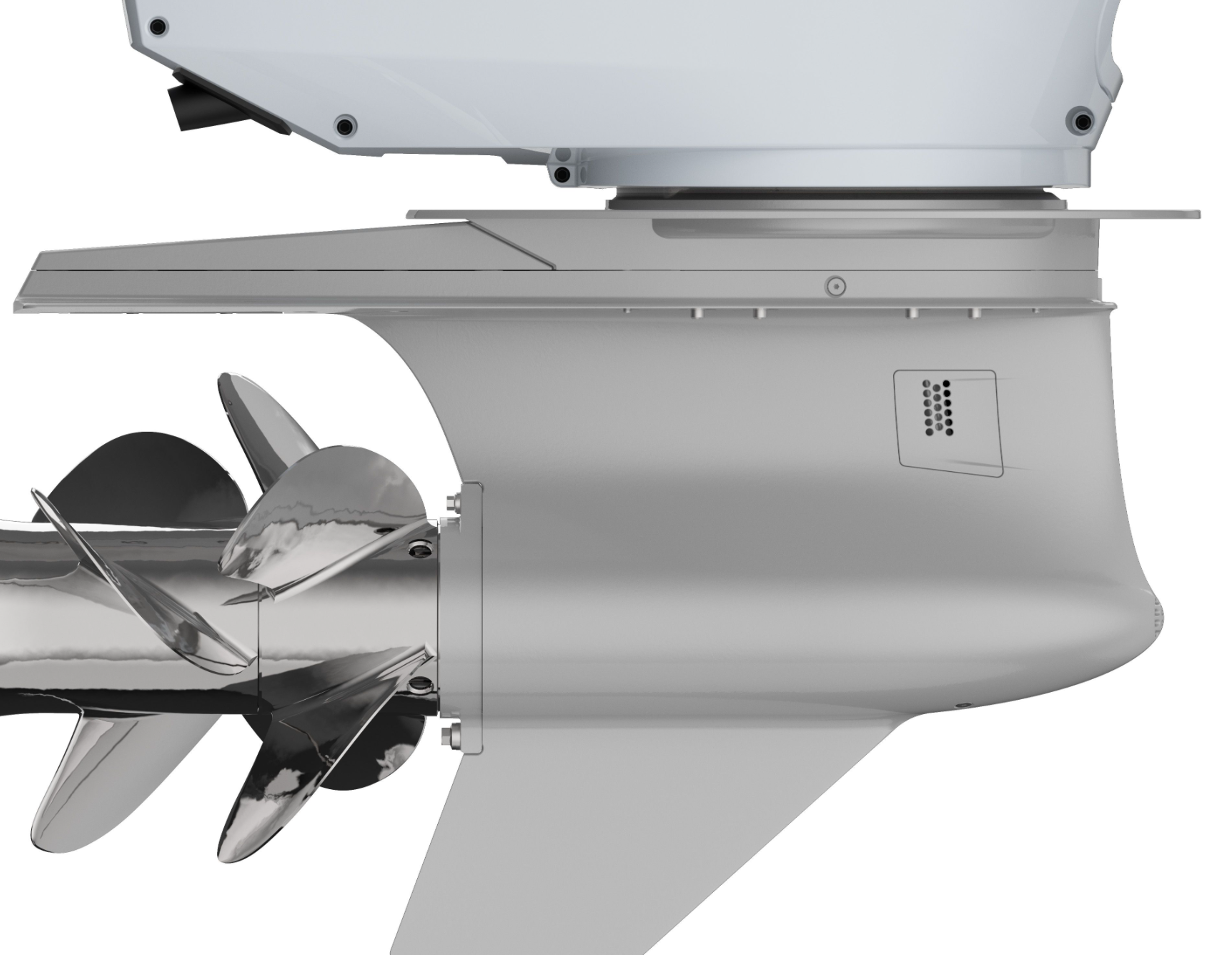

These engines are a real kick in the butt. And then, surprise, all the crew members almost fall at the slightest request of the throttle. Once we were out to sea, we could accelerate. This is a bit confusing for a user used to steering his outboard and looking behind to see the angle of his motor. You have to lean over to see the bases working independently in the water.

This one controls the two engines, or rather the 2 bases. The maneuver to leave our place of the pontoon is done by using the joystick. It's velvet! The AMS base that erases all vibrations

No vibration is transmitted by the AMS base. It is necessary to engage the air exhaust (in option) so that the noise of the V12 is slightly heard. The pilot starts the engine without us even realizing it. With all these technological novelties, the test is exciting. Moreover, this base is equipped with a gearbox (two automatic speeds) allowing to embark very large propellers. Remember that in addition to a huge displacement (7.6 liters), this engine block is equipped with a fixed power head with the base that turns below. But we had to wait for the Cannes Yachting Festival in September 2021 to test this engine in France. The charts below were based on tests done by Mercury Marine.Mercury announced this new V12 block in early 2021. We think this remarkable new engine platform from Mercury Marine opens up many opportunities for both it, boatbuilders and consumers – all of whom see the advantages of ever-larger boats with outboard power. It can also engineer engines that can get even more horsepower out of their new V12 block. But now it has a versatile 7.6 L platform that can be downgraded to 500-hp (which it simultaneously announced with the 600) for commercial applications. That took a huge investment in both money and time. Mercury Marine rejected the concept of taking a GM engine and marinizing it for a lot of reasons, preferring instead to develop its own new engine platform tailor-made for the market. The first was why didn’t Mercury get to work on its own high horsepower engine when a few Mercury engineers left to start Seven Marine in 2010? And, last year, why did Volvo Penta drop the Seven Marine platform it bought in 2017? Now we know the answers to both of those questions.Ĭlearly, the two largest engine makers knew years ago that there was about to be a paradigm shift in consumer acceptance of high-horsepower outboard engines on large cruising, fishing and day boats. The announcement of the new V12 600-hp outboard from Mercury Marine answers a lot of questions we have had. You are looking at 2,400 hp being unleashed on a Formula 500. These aren’t fire-breathing racing engines, but instead are intended to be reliable, high-torque, economical engines that are civilized to drive, easy to dock and low on maintenance. It reached 20 mph in 7.87 seconds and 30 mph in 12.8 seconds with a top speed of 69 mph.Ĭonsidering these engines were pushing nearly 24 tons of fiberglass, we consider this excellent performance. On the Formula 500 SSC, which was the longest and heaviest boat in our demonstration lineup, the quad V12 Verado outboards pushed the boat on plane in 6.58 seconds with little bowrise. Looking at the digital readout of the speedometers, it looked like we were looking at a stopwatch. In all cases, the power came on smooth and linear. (9,525 kg to 21,318.8 kg), there wasn’t the anticipated pin-you-back-in-the-seat feeling when the throttles were thrown down. How Does it Perform?īecause we operated these engines on big, beefy boats ranging from 42’ to 54’ (12.80 m to 16.45 m) long that had test weights ranging from 21,000 lbs. It’s a high-revving outboard with a WOT range of 5600-6400 RPM.Ī redesigned binnacle is more user friendly. The new V12 has a bore and stroke of 3.8” x 3.4” (9.65 cm x 8.63 cm) and operates on 87 octane regular fuel, unlike the 400R which requires high-test fuel. In comparison, the Mercury 400R produces 70 amps. Big boats typically have many power-hungry features like gyro stabilizers, air-conditioners and concert-worthy stereos, so the alternator cranks out 150 amps.
MERCURY 600 OUTBOARD FULL
Mercury has a full range of props up to 18” (45.72 cm) in diameter.

To harness this power, Mercury used a lower unit with twin counter-rotating props that feature a four-blade prop in front and a three-blade prop behind. It’s a naturally aspirated, V12 quad-cam, 64-degree V powerhead with dual throttle bodies that creates a package that produces a tremendous amount of torque. This outboard has been five years in the making and is designed to propel boats in the 35’ to 55’ (10.66 m to 16.76 m) range. The new V12 cylinder banks are at a 64-degree angle, and it has dual props and a swiveling lower gear case.


 0 kommentar(er)
0 kommentar(er)
